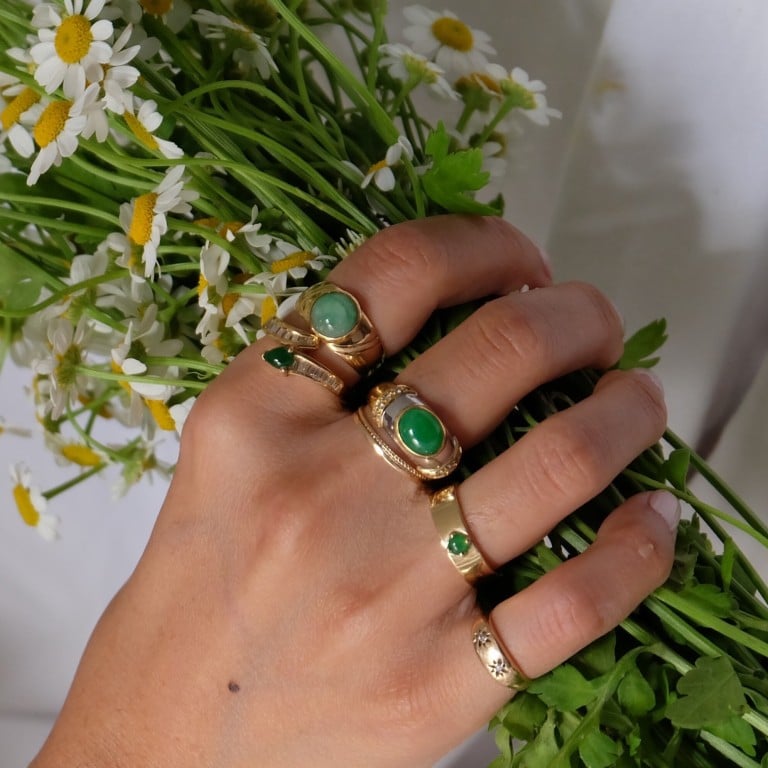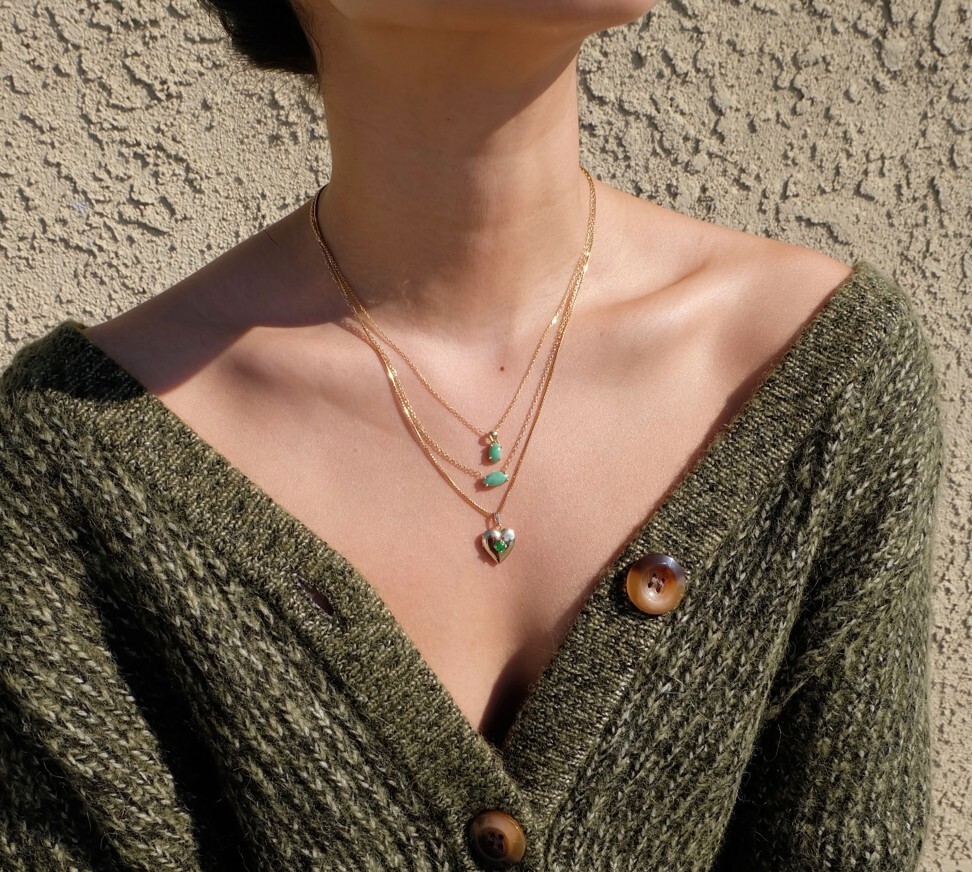
Jade jewellery for the 21st century, inspired by Lucy Liu and other Asian-American role models: the story of start-up Ren
- Crystal Ung knew the story of her grandfather’s lucky jade ring, and was drawn to jewellery made with the precious stone, but found it old-fashioned
- The successful entrepreneur founded Ren to make jade jewellery with contemporary appeal. Anti-Asian racism triggered by Covid-19 made it personal
The resort island of Bermuda is not the first place that comes to mind when you think of jade, the stone long associated with East Asia. Yet that’s where Crystal Ung was when she first came up with the idea of founding a jade-focused jewellery brand.
An accomplished executive and entrepreneur with an MBA from New York University and stints at top companies including Disney, Amazon, J. Crew, and Saks, and time spent at the Council of Fashion Designers of America (CFDA), Ung came across a jade bracelet in a vintage shop while on a holiday in Bermuda in 2018.
“I didn’t buy it, but couldn’t stop thinking about it, and it brought back memories about my family, so I decided to buy something in New York, where I was living at the time,” Ung tells the Post on a video call from Los Angeles. “But when I got back I couldn’t find anything and I had all these questions about jade.”
Ung recalls that her Chinese-American family would buy jade in Chinatown shops and that she tried to do the same after that trip to Bermuda. Her experience, however, was a disappointment.

“A lot of the designs didn’t appeal to me; it felt it was designed for my parents’ generation and I felt very frustrated,” she explains. “It’s such an important part of our culture and why is it so hard to secure these pieces? So I thought, could I? The idea kept lingering.”
At the time Ung, who had previously founded an athleisure brand that’s still operating, was working at the CFDA, where she witnessed first-hand how challenging – and eventually rewarding – starting an independent brand could be.
After leaving New York and moving back to her native California, Ung decided to establish Ren (the name comes from the Chinese word for people): a brand that would celebrate jade and cater to Asian-Americans looking for a more modern and sophisticated take on this traditional ornamental stone.
A lot of people in the US don’t know about jade, the magical properties and the cultural significance of it
Jade had a profound influence on Ung from an early age. She’s ethnically Chinese but her family fled China during the Cultural Revolution: relatives on her mother’s side migrated to Laos while those on her father’s side went to Cambodia.
“When my grandfather went to Cambodia he made that journey alone, and his father gave him a jade ring to protect him,” Ung says.
“There was a train accident and miraculously he didn’t die, so he believed it was the jade ring. Unfortunately, with the Khmer Rouge he had to give up his possessions, including the ring. I’ve never met him, but every time I wear jade I feel a connection to him.”

Ung, whose great-uncle works in the jewellery industry, started Ren in the middle of the coronavirus pandemic, which accelerated her plans to devote herself to this project.
“Because of the virus, there was increased violence against Asian-Americans, which made me think a lot about identity and community and what it means to be Asian-American, so it was like a personal project,” she says. “Black Lives Matter was also a trigger and thinking about identity and what it means to be an activist.
“If I’m able to make an impact by keeping East Asian traditions alive and giving back to the community, I thought it would be worthwhile.” (10 per cent of Ren’s sales revenue is donated to Apex for Youth, a mentoring programme for Asian and immigrant youth in New York, and Asian Youth Centre, which helps low-income, immigrant, and at-risk youth in southern California).
In Myanmar, China’s prized jade costs more than money
Ung set out to learn the history of jade and its prized role in Asian cultures, but she also wanted to shed its stale image as a stone used in traditional jewellery that often doesn’t resonate with new generations.
“It was very personal, because it was driven by what I felt was missing in the market and the way I wanted to consume jewellery,” says Ung. “I wanted to create timeless pieces that are easy to wear every day, but special enough to mark occasions like weddings and engagements and timeless enough that you could pass them along to future generations.”
Ung sources her jade from Myanmar (formerly Burma) and works with a family-run studio in Brooklyn, New York, to make all the pieces, which are available on the company’s website.

Her jewellery is a complete departure from the traditional amulets and carved pendants that those living in Asia normally associate with jade. Think dainty rings, hoops, and necklaces embellished with hints of jade and other stones, such as opals and pearls, that can be worn with a simple T-shirt and have a lightness and versatility to them.
One of the brand’s bestselling items, the Lucy, is named after Asian-American actress Lucy Liu, one of the women Ung mentions along with Connie Chung, Michelle Kwan, Margaret Cho and Naoko Takeuchi (the creator of anime Sailor Moon) as her inspirations.
While Ung is targeting Asian-Americans with Ren, she is also aware of the importance of educating all people in the United States – and around the world – about jade and its fascinating history.
“A lot of people in the US don’t know about jade, the magical properties and the cultural significance of it,” she says. “It’s a beautiful love story that hasn’t been adequately told yet, so [applying] a more modern lens not just to the product but also the branding hopefully will help tell the story.”

